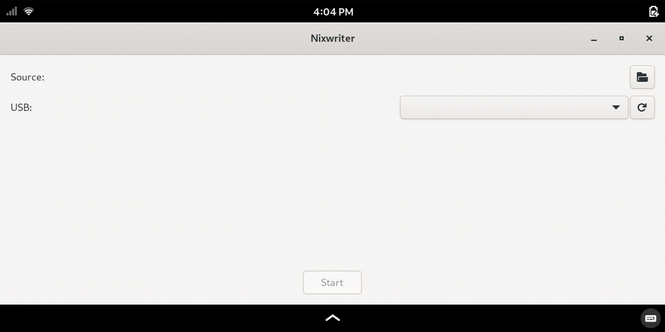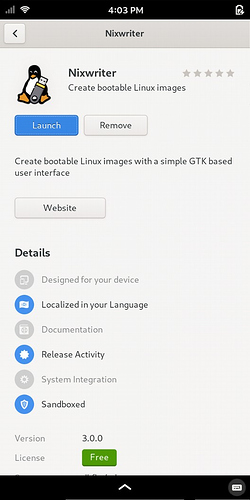Imagine you’re at your usual Friday happy hour or Sunday afternoon beer bust and a sufficiently buzzed friend is oohing and aahing over your cool new Linux phone, and they now have a sudden interest in trying PureOS on their laptop when they get home.
“Well,” you say, “check it out…I’ll burn a bootable image for ya.” (Just so happens they have a spare USB-C drive in their pocket. And you just so happen to keep a downloaded PureOS image on your microSD card.)
Nixwriter (flatpak):
Requires only a slight scaling down and switching to landscape:

Voila!
